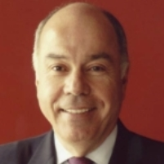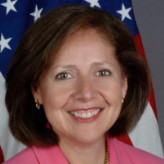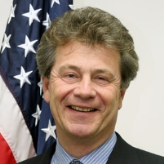Brazil
Lay of the Land: With a vast area of 3,287,597 square miles (the size of the U.S. excluding Texas and California) Brazil is the fifth largest country in the world (after Russia, Canada, China and the U.S.) and the fifth most populous (after China, India, the U.S. and Indonesia). Sprawling across central and eastern South America, Brazil borders all other South American countries except Chile and Ecuador. Such huge size yields tremendous geographical and cultural diversity. The Instituto Brasileiro de Geografia e Estatistica (Brazilian Institute of Geography and Statistics) (IBGE), which conducts Brazil’s decennial census, has divided Brazil into five regions for statistical and analytical purposes. The North region comprises 45% of the country but only 6.2% of its people. Brazil’s predominant geographical features—the Amazon River and its rainforest—are located in the North region. The Amazon is the largest river in the world by volume flowing through the globe’s largest rainforest, which is roughly half the size of the contiguous United States. Although much of it remains to be explored, the rainforest likely contains vast reserves of minerals and gemstones, possibly oil, and the world’s largest concentration of iron ore, in addition to the obvious wealth of lumber and forest products. Managing those resources while not harming the fragile ecosystem will be a great challenge for Brazil in coming years. With a total flow greater than the next ten largest rivers combined, the Amazon accounts for approximately one fifth of the world’s total river flow and has the largest basin in the world, which drains 40% of South America and thus provides a natural transportation network.
The United States was the first nation to establish a consulate in Brazil, in 1808, following the transfer of the Portuguese royal court to Rio de Janeiro. The U.S. was also the first nation to recognize Brazil’s independence. However, it was not until after World War II that the United States became Brazil’s number-one trading partner and foreign investor.
Current issues of concern to both Brazil and the United States include counter-narcotics and terrorism, energy security, trade, environmental issues, human rights and HIV/AIDS. At present, relations are fairly close, despite the differing political approaches of President Lula and President Bush, who have exchanged official visits. President Lula has made relations with neighboring countries in the Southern Common Market (Mercosur) his first priority, and has sought to strengthen ties with nontraditional partners, including India and China. Lula’s pursuit of closer ties with Cuba, Venezuela and Bolivia—all governed by left wing governments that do not have friendly relations with Washington—has occasioned criticism from the U.S. Further, some American commentators have criticized President Lula for referring to the U.S. as an empire, apparently unaware that the designation is surprising only to Americans ears. In 2002, Brazil—a major cotton export competitor—initiated a WTO dispute (PDF) settlement case against certain features of the U.S. cotton subsidies program. On September 8, 2004, a WTO dispute settlement panel ruled against the United States on several key issues in the case. Nevertheless, in March 2007 the two countries signed an agreement to promote greater ethanol production and use internationally, which is not surprising given that the U.S. and Brazil are the number 1 and number 2 corn producers in the world.
Brazil boasts the largest national economy in Latin America, the world’s tenth largest energy consumer and the world’s tenth largest economy overall, with large and developed agricultural, mining, manufacturing and service sectors, as well as a large labor force. Brazil is the world’s largest producer of sugar cane, oranges, and coffee, and the second largest producer of soybeans, beef, poultry and corn. Government and foreign investment are experiencing huge booms. In 2007, Brazil launched a four-year, $300 billion infrastructure modernization plan, while foreign long-term direct investment was about $193.8 billion for 2007. Agriculture and allied sectors accounted for 5.1% of the gross domestic product in 2007, while industry, which is highly concentrated in the South, accounted for 30.8% of GDP. Brazil’s energy comes from renewable sources, particularly hydroelectricity and ethanol; and nonrenewable sources, mainly oil and natural gas. Brazil is expected to become an oil superpower over the next few decades, owing to massive oil and natural gas discoveries in recent years.
Despite its history of alternating between democracy and oligarchy, Brazil today is a politically stable democratic republic, and has been since 1988. Free and fair elections determine the presidency and other offices, and freedom of the press, speech, association, and religion are widely recognized. However, widespread, flagrant and serious human rights violations do occur in the field of internal security. Especially in the larger cities, crime rates are exceptionally high, and violent criminal gangs hold sway in some areas. On average, Brazil sees about 50,000 murders per year. Allegedly in response to crime, state and local authorities engage in the following human rights abuses: unlawful killings, excessive force, beatings, abuse, and torture of detainees. Making matters worse, police are often unable to protect witnesses involved in criminal cases. In recent years, some security forces have formed informal milicias, through which they employ illegal tactics against those whom they suspect of criminal activity; in one case, milicia members in Rio de Janeiro kidnapped and tortured several journalists who were investigating milicia activities. When suspects are arrested rather than summarily killed, they face harsh prison conditions, prolonged pretrial detention and inordinate delays of trials. The criminal justice system is reluctant to prosecute government officials for corruption. Other problems include violence and discrimination against women; violence against children, including sexual abuse; trafficking in persons; discrimination against indigenous people and minorities; failure to enforce labor laws; widespread forced labor; and child labor in the informal sector.
Title: Chargé d'Affaires
 Vieira, Mauro
Vieira, Mauro
Mauro Vieira presented his credentials as Brazil’s ambassador to the United States in January 2010.
- Table of Contents
- News
- Overview
- Basic Information
- History
- Newspapers
- History of U.S. Relations with Brazil
- Current U.S. Relations with Brazil
- Where Does the Money Flow
- Controversies
- Human Rights
- Debate
- Past Ambassadors
- Ambassador to the U.S.
- Embassy Web Site in the U.S.
- Comments
- Leave a comment
U.S. Ambassador to Brazil

Liliana Ayalde has served as the United States Ambassador to Paraguay since August 5, 2008. Ayalde holds a bachelor’s degree from American University, and master’s degree in International Public Health from Tulane University. She is fluent in Spanish and Portuguese, and has working knowledge of French.
Previous U.S. Ambassador to Brazil

Lay of the Land: With a vast area of 3,287,597 square miles (the size of the U.S. excluding Texas and California) Brazil is the fifth largest country in the world (after Russia, Canada, China and the U.S.) and the fifth most populous (after China, India, the U.S. and Indonesia). Sprawling across central and eastern South America, Brazil borders all other South American countries except Chile and Ecuador. Such huge size yields tremendous geographical and cultural diversity. The Instituto Brasileiro de Geografia e Estatistica (Brazilian Institute of Geography and Statistics) (IBGE), which conducts Brazil’s decennial census, has divided Brazil into five regions for statistical and analytical purposes. The North region comprises 45% of the country but only 6.2% of its people. Brazil’s predominant geographical features—the Amazon River and its rainforest—are located in the North region. The Amazon is the largest river in the world by volume flowing through the globe’s largest rainforest, which is roughly half the size of the contiguous United States. Although much of it remains to be explored, the rainforest likely contains vast reserves of minerals and gemstones, possibly oil, and the world’s largest concentration of iron ore, in addition to the obvious wealth of lumber and forest products. Managing those resources while not harming the fragile ecosystem will be a great challenge for Brazil in coming years. With a total flow greater than the next ten largest rivers combined, the Amazon accounts for approximately one fifth of the world’s total river flow and has the largest basin in the world, which drains 40% of South America and thus provides a natural transportation network.
The United States was the first nation to establish a consulate in Brazil, in 1808, following the transfer of the Portuguese royal court to Rio de Janeiro. The U.S. was also the first nation to recognize Brazil’s independence. However, it was not until after World War II that the United States became Brazil’s number-one trading partner and foreign investor.
Current issues of concern to both Brazil and the United States include counter-narcotics and terrorism, energy security, trade, environmental issues, human rights and HIV/AIDS. At present, relations are fairly close, despite the differing political approaches of President Lula and President Bush, who have exchanged official visits. President Lula has made relations with neighboring countries in the Southern Common Market (Mercosur) his first priority, and has sought to strengthen ties with nontraditional partners, including India and China. Lula’s pursuit of closer ties with Cuba, Venezuela and Bolivia—all governed by left wing governments that do not have friendly relations with Washington—has occasioned criticism from the U.S. Further, some American commentators have criticized President Lula for referring to the U.S. as an empire, apparently unaware that the designation is surprising only to Americans ears. In 2002, Brazil—a major cotton export competitor—initiated a WTO dispute (PDF) settlement case against certain features of the U.S. cotton subsidies program. On September 8, 2004, a WTO dispute settlement panel ruled against the United States on several key issues in the case. Nevertheless, in March 2007 the two countries signed an agreement to promote greater ethanol production and use internationally, which is not surprising given that the U.S. and Brazil are the number 1 and number 2 corn producers in the world.
Brazil boasts the largest national economy in Latin America, the world’s tenth largest energy consumer and the world’s tenth largest economy overall, with large and developed agricultural, mining, manufacturing and service sectors, as well as a large labor force. Brazil is the world’s largest producer of sugar cane, oranges, and coffee, and the second largest producer of soybeans, beef, poultry and corn. Government and foreign investment are experiencing huge booms. In 2007, Brazil launched a four-year, $300 billion infrastructure modernization plan, while foreign long-term direct investment was about $193.8 billion for 2007. Agriculture and allied sectors accounted for 5.1% of the gross domestic product in 2007, while industry, which is highly concentrated in the South, accounted for 30.8% of GDP. Brazil’s energy comes from renewable sources, particularly hydroelectricity and ethanol; and nonrenewable sources, mainly oil and natural gas. Brazil is expected to become an oil superpower over the next few decades, owing to massive oil and natural gas discoveries in recent years.
Despite its history of alternating between democracy and oligarchy, Brazil today is a politically stable democratic republic, and has been since 1988. Free and fair elections determine the presidency and other offices, and freedom of the press, speech, association, and religion are widely recognized. However, widespread, flagrant and serious human rights violations do occur in the field of internal security. Especially in the larger cities, crime rates are exceptionally high, and violent criminal gangs hold sway in some areas. On average, Brazil sees about 50,000 murders per year. Allegedly in response to crime, state and local authorities engage in the following human rights abuses: unlawful killings, excessive force, beatings, abuse, and torture of detainees. Making matters worse, police are often unable to protect witnesses involved in criminal cases. In recent years, some security forces have formed informal milicias, through which they employ illegal tactics against those whom they suspect of criminal activity; in one case, milicia members in Rio de Janeiro kidnapped and tortured several journalists who were investigating milicia activities. When suspects are arrested rather than summarily killed, they face harsh prison conditions, prolonged pretrial detention and inordinate delays of trials. The criminal justice system is reluctant to prosecute government officials for corruption. Other problems include violence and discrimination against women; violence against children, including sexual abuse; trafficking in persons; discrimination against indigenous people and minorities; failure to enforce labor laws; widespread forced labor; and child labor in the informal sector.
Title: Chargé d'Affaires
 Vieira, Mauro
Vieira, Mauro
Mauro Vieira presented his credentials as Brazil’s ambassador to the United States in January 2010.
Comments
U.S. Ambassador to Brazil

Liliana Ayalde has served as the United States Ambassador to Paraguay since August 5, 2008. Ayalde holds a bachelor’s degree from American University, and master’s degree in International Public Health from Tulane University. She is fluent in Spanish and Portuguese, and has working knowledge of French.
Previous U.S. Ambassador to Brazil








Comments